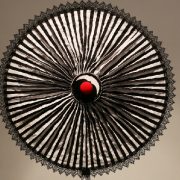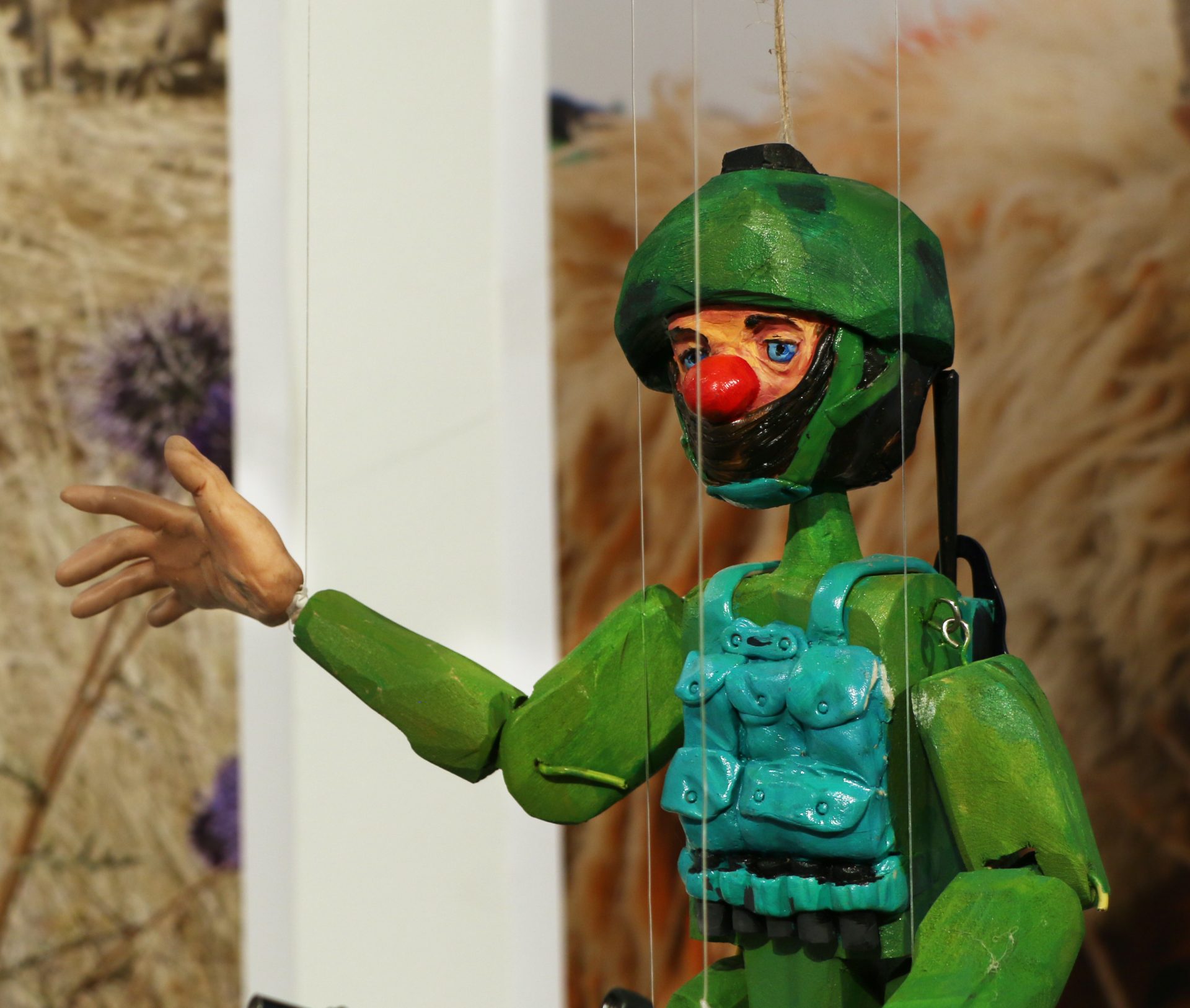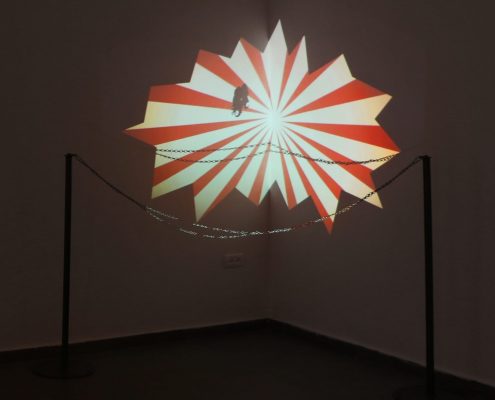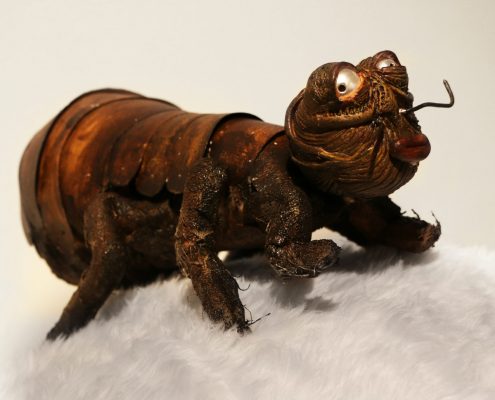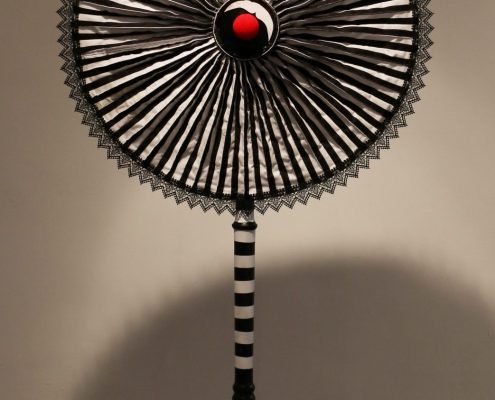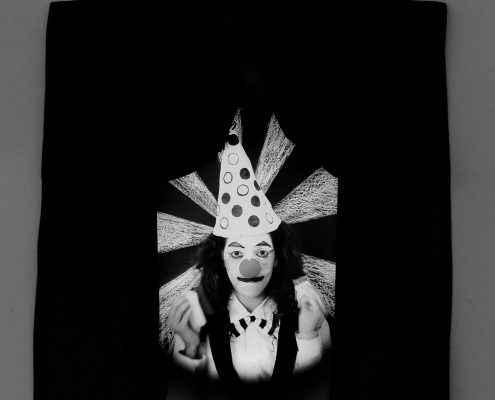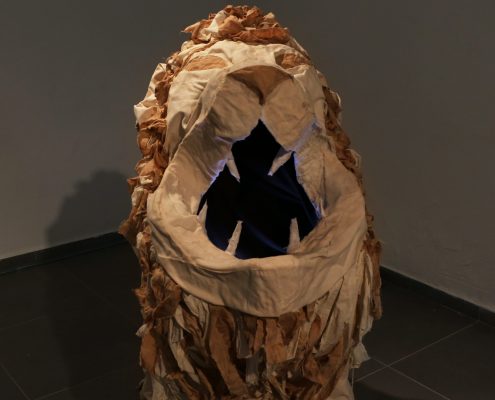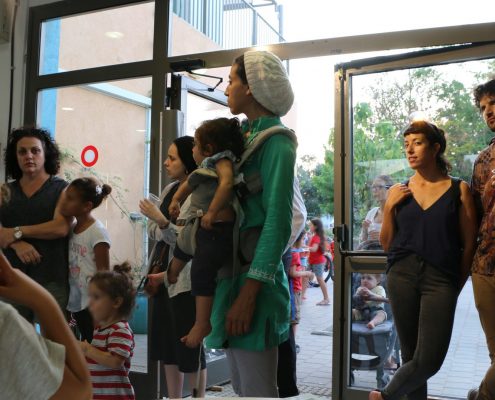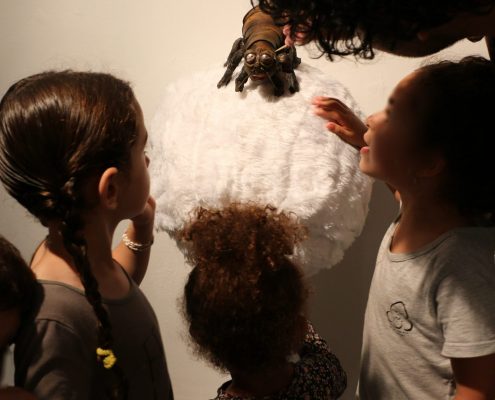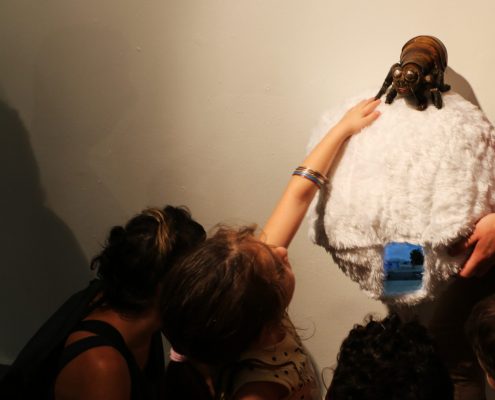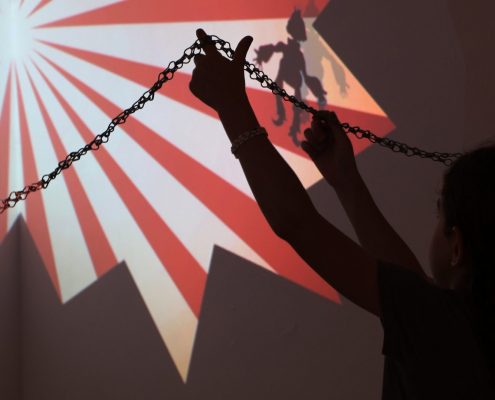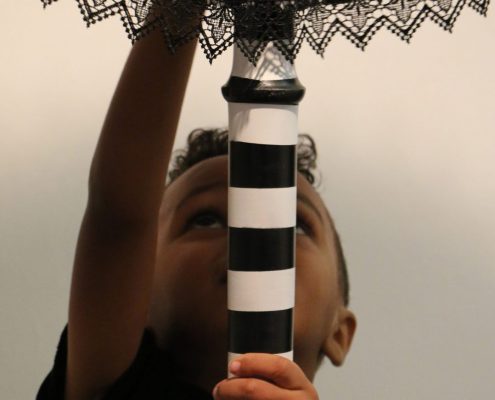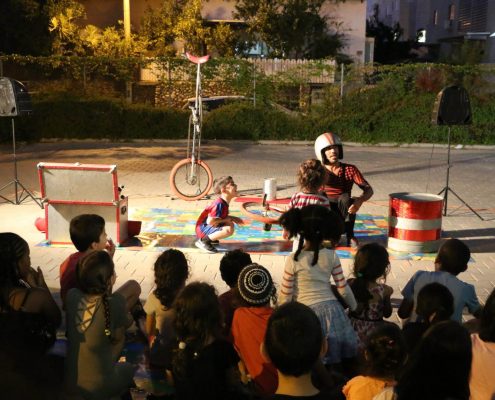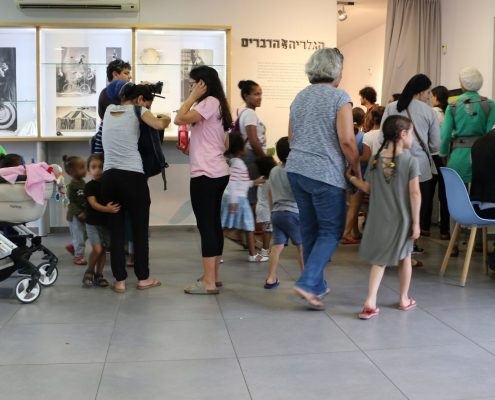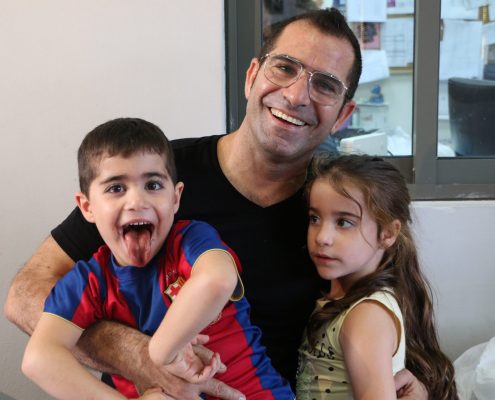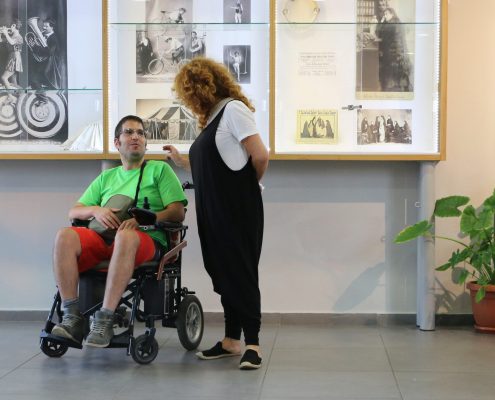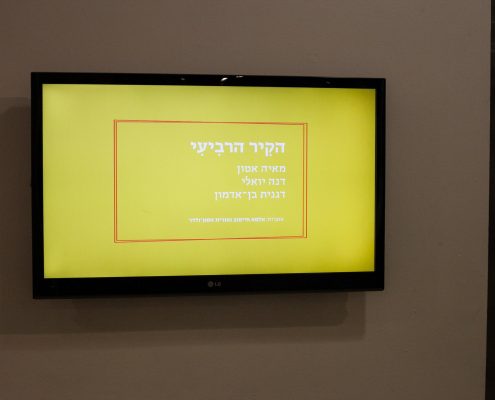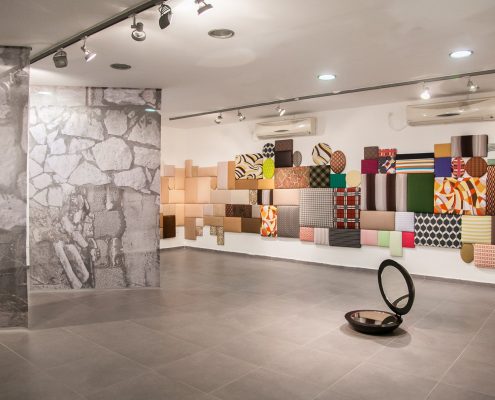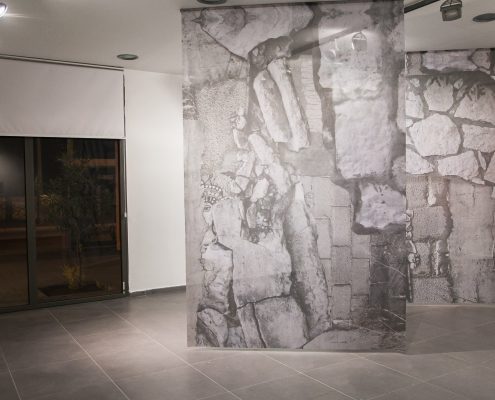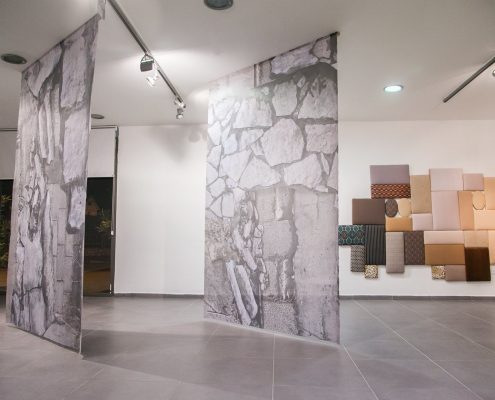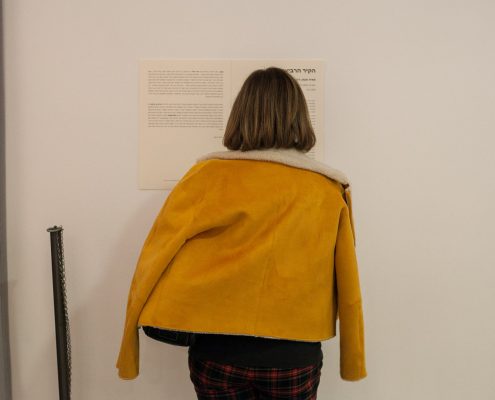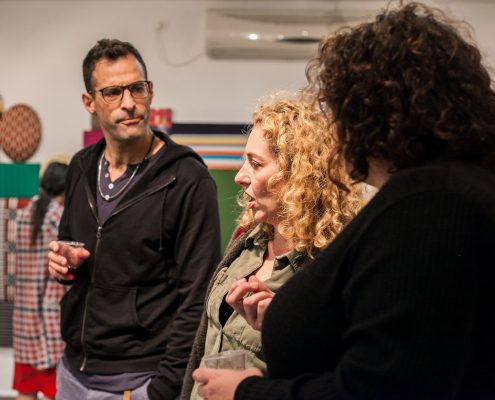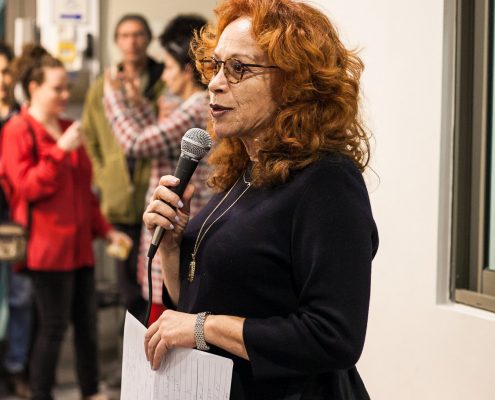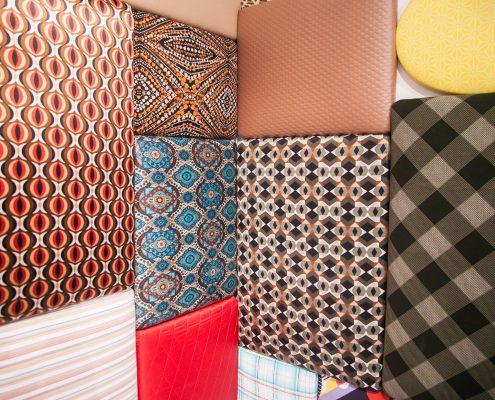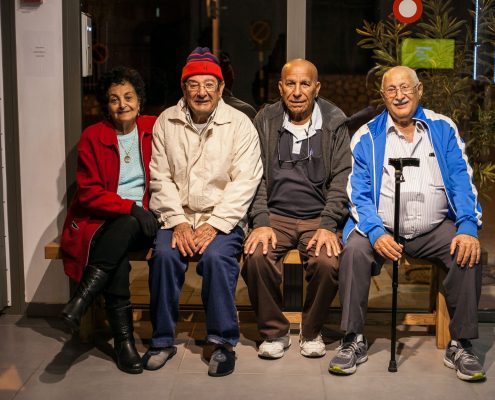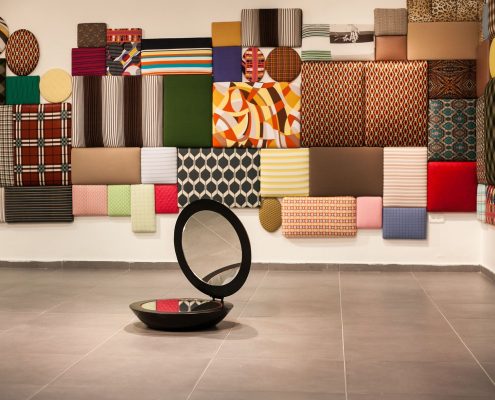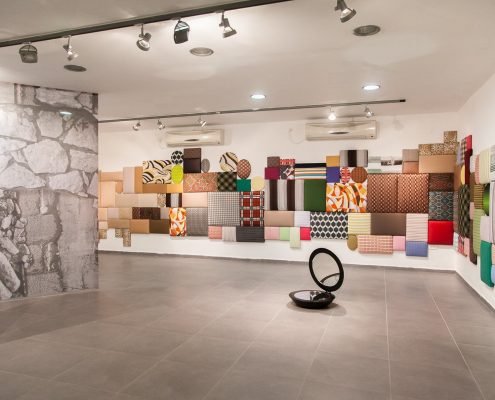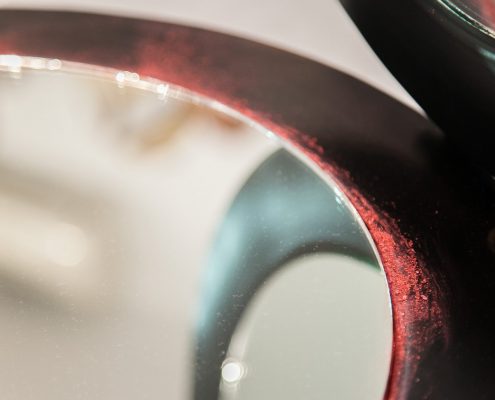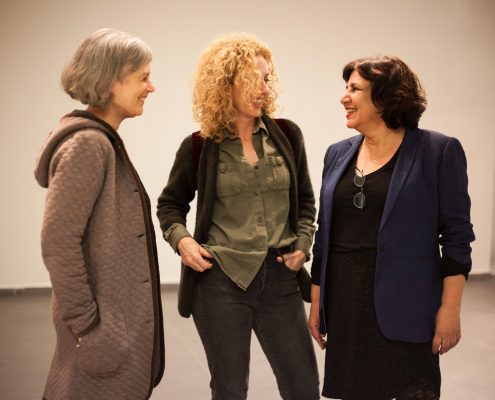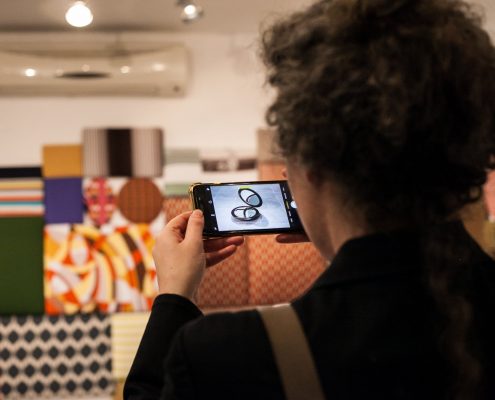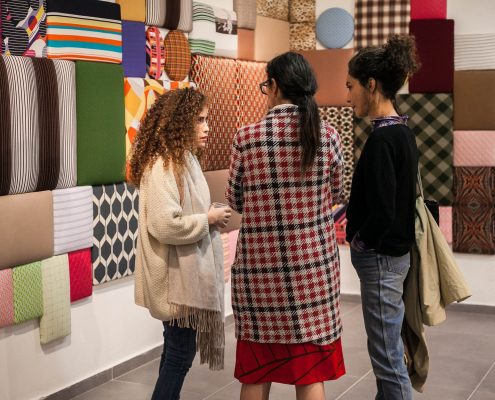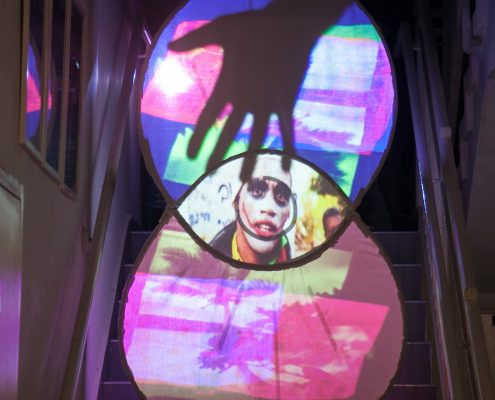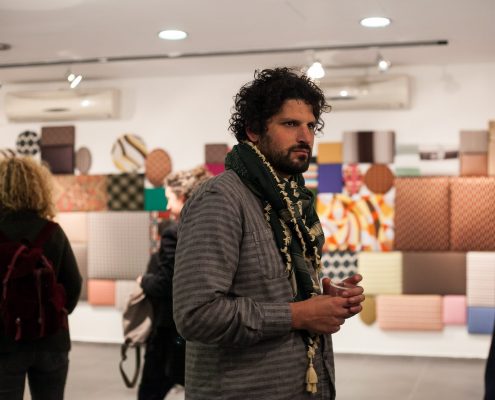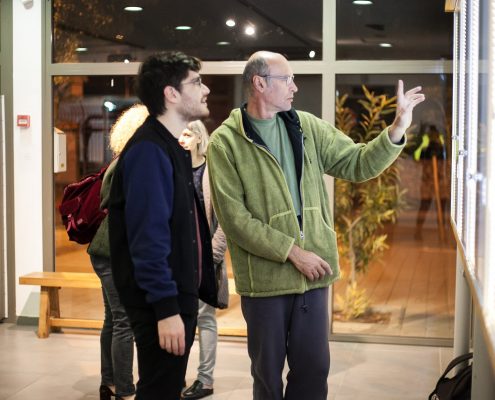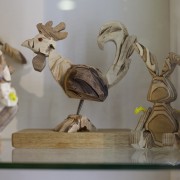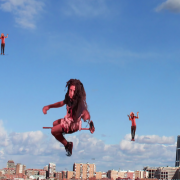The Fourth Wall
Maya Attoun, Dganit Ben Admon, Dana Yoeli
Curators: Alfa Haimov and Orit Hasson Walder
Opening: Saturday evening, December 15, 2018
The Fourth Wall is a concept from theatre and cinema describing an invisible transparent wall dividing the stage or photographed scene from the viewer. The term is linked to the essential nature of this exhibition in which interiors (such as homes, or intimate moments engraved in memory) blend with the external (the street, national identity, enlarged several times to exaggerate their visibility and make them stand out). The “fourth wall” which protects the interior from the outside melts away and disappears in this exhibition, leaving the viewer to seemingly stride right into the artworks’ soft, vulnerable core.
The exhibition was conceived in the wish to take time to consider the aspect of architecture in the Ramat Eliyahu neighborhood, where the Art Workshop and Gallery are located. The forms, colors, and patterns that the three artists perceived in the visual public space formed by the residential, industrial, and commercial buildings constitute the exhibition’s point of origin. After touring around the neighborhood, the artists translated what they saw into the sociopolitical-cultural contexts that form part of each one’s unique art language.
The Ramat Eliyahu neighborhood is one of Israel’s “urburbs”[1] : a fragmented hybrid of urban and suburban, a residential neighborhood among many in which daily life goes about without any glamour or mystery. The modernist grey façade is a catalyst for small private enterprises in which residents have added areas of warm color designed to improve the environment, such as reddish forms of a window bar, a decorative burgundy-colored railing replacing a standard balcony railing, a bubblegum-pink wall marking the outside of a single apartment at the center of a grey cinderblock housing project.
Maya Attoun considers these spontaneous additions of color an attempt to add freshness and beauty – like adding pinkish rouge to the face. The colors that have faded in the harsh sunlight, remnants of makeup that smeared and was erased, often bring to mind a person who blushed but makes utmost attempt not to stand out. “Somek”[compact],Attoun’s sculpture made of shapes of makeup or blusher compacts, an intimate accessory enlarged to an unusable size, is filled antique rose blush similar to the colors appearing in the neighborhood streets. The dense powder is stamped with a graphic logo taken from the geometric decorations the artist noticed on the building facades, thus memorializing the public façade with the delicate rouge meant for personal use.
“Bekia” [splittable] the large flag installation by Dana Yoeli is an illusion between personal memory and national ethos, with soft walls which may be read as stone walls or perhaps walls of a memorial such as found in each Israeli city and in the childhood memories of most Israelis.Yoeli enlarged photographs of broken stones and blocks from walls and fences in the Ramat Eliyahu neighborhood then printed them on sheets used for large-scale outdoor billboards. Among the enlarged images of stones making up the wall is a small portrait of the Byzantine Empress Theodoraas commemorated in a centuries-old mosaic in Verona, Italy. The photograph was hanging in the artist’s childhood home, constituting an important memory for her. The artist hid a portion of the portrait, indelibly imprinted on her private memory – just one eye and a quarter of a crown, a third of her face – among the broken stones of collective childhood memories. Like Maya Attoun’sblusher compact enlarged several times, the flags are huge, taking up the full height of the gallery space, illuminating a familiar banal moment. The transition to the medium of photography transformed the sensation of rough stone surface into a smooth area while the fragments and dust of the neighborhood’s mythology blend with the glory and splendour of ancient mythologies.
Dganit Ben Admon remembers riding through the streets of Beersheva as a child, passing by the mass housing blocks. The memory evokes thoughts of how the long facades of the project concealed dozens of apartments. Filled with life, the housing blocks are encoded in the patterns, forms, and colors of the living rooms and bedrooms: domestic textiles of clothing, drapery, tablecloths, externalizing the passion to stand out and show some beauty in a place in which the repetitive greyness and replication are strongly present. Fabric, as material wrapping the body from the moment of birth, speaks in a universal language of contact and tactile vision[2].In her installation Inside-Out, the artist creates a “textile archive” through a modernistic her modernistic transformation blending abstraction and geometric shapes. Through this archive she reveals to the viewers the interiors of the apartments stacked up and placed side by side, while at the same time, making the street present in a process in which the interior is projected outward. Like Dana Yoeli, Ben Admon also builds a soft wall – but while Yoeli’s flexible wall was built through imitation and taking things to the extreme in its link to the collective memory of commemoration and national mythos, Ben Admon’s soft, upholstered wall has been constructed as an object protecting her dear ones, even though she knows that it is merely an imitation.
Alfa Haimov
[1] Dr. Roy Brand, in The Urburb: Patterns of Contemporary Living, Catalog of the Israeli Pavilion of the 14th Venice Biennale for Architecture, Brand, R. and A. Shalom (eds.), (Sternthal Books, 2014), p. 276.
[2] My inspiration for the term is from Irena Gordon’s article on “Woven Consciousness” (2015) in Mahshavot al craft (Thoughts on craft), Bartal , U., R. Zehavi, and E. Ehrlich (eds.), (Tel Aviv: Resling), pp. 387-406.

